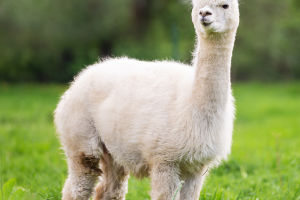Cats belong to the Mammalia, Carnivora, and Felidae groups in zoological classification. For thousands of years, cats have been humans' pets and companions. During this time, cat breeds have continuously evolved and developed, and today, there are hundreds of different cat breeds.
TICA (The International Cat Association) is currently one of the largest cat breed organizations in the world, currently recognizing more than 70 cat breeds. Some of the more common breeds include the Maine Coon, Siamese, Persian, British Shorthair, and Ragdoll, among others.
Despite the long-term domestication of cats, little work has been done to improve cat breeds. Cat breeding and evolution have been largely uncontrolled, resulting in far fewer cat breeds than other livestock and poultry breeds.
Currently, there are three common breeding methods for breeding cats: inbreeding, bloodline breeding, and crossbreeding.
The terms "inbreeding," "bloodline breeding," and "crossbreeding" refer strictly to genealogy, which describes the pedigree of a cat or the pedigree of two cats when they have kittens. In other words, these three breeding techniques are not inherently good or bad; they are just tools.
As a breeder, choosing which breeding method to use to improve the quality of breed cats requires consideration of many factors.
First, the purpose and goals of breeding need to be considered. If the goal is to preserve and improve certain breed characteristics, such as coat color, body shape, ear shape, etc., then inbreeding may be more appropriate. Inbreeding can better preserve and inherit these characteristics.
Second, the cat's health and risk of genetic defects need to be considered. Inbreeding can easily lead to the inheritance of genetic defects and diseases. Therefore, when choosing a breeding method, it is necessary to pay attention to avoid inbreeding. Crossbreeding may be more suitable for keeping cats healthy and genetically diverse.
Additionally, the cost and time of breeding also need to be considered. Bloodline breeding requires more time and energy to understand the cat's family history and genes, and also requires more funds for genetic testing and other operations. Inbreeding is relatively simple and economical.
Finally, it is important to consider your own experience and skills. Novice breeders may need to choose a simpler breeding method, such as inbreeding, to increase the success rate of breeding. Experienced breeders can choose a more complicated breeding method, such as bloodline breeding, to improve the quality of the breed.
Choosing a breeding method that suits you and your cat is crucial, and you need to consider many factors to make the most suitable decision. At the same time, it is also necessary to abide by relevant laws, regulations, and ethics to ensure the health and welfare of cats.
Cat breeding has a significant impact on the quality of cat breeds. Choosing a suitable breeding method is critical for preserving and improving certain breed characteristics while maintaining cat health and genetic diversity.
Breeders must carefully consider their goals, the health of their cats, the cost and time involved, and their own experience and skills. Ultimately, by making informed decisions, breeders can contribute to the development and evolution of cat breeds.


